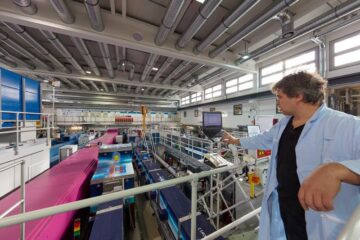DualMode switch: Broad band switch for dual-mode applications

In conventional dual-mode circuitry both signal lines are just switched by the PIN-diodes. The novel dual-mode switches, which were developed in the department of electronics at the University of Applied Sciences Aachen, exploit the advantages of symmetry in dualmode circuitry to reach a significantly higher isolation in the OFF-state, maintaining the same good values of transmission in the ON-state. Two embodiments of the duadualMode-switches were developed: the X-switch and the Z-switch. The main advantage of the X-switch is that in the ONstate the current does not flow through the switching elements. Thus the specifications for the PIN-diodes concerning maximum power are very much lower. The Z-switch is a broadband switch which shows a strongly improved isolation in the complete frequency band compared to conventional switches. Concerning power it has the same demands to the PIN-diodes as conventional switches.
Weitere Informationen: PDF
PROvendis GmbH
Tel.: +49 (0)208/94105 0
Ansprechpartner
Dipl.-Ing. Alfred Schillert
Media Contact
Alle Nachrichten aus der Kategorie: Technologieangebote
Neueste Beiträge

Bakterien für klimaneutrale Chemikalien der Zukunft
Forschende an der ETH Zürich haben Bakterien im Labor so herangezüchtet, dass sie Methanol effizient verwerten können. Jetzt lässt sich der Stoffwechsel dieser Bakterien anzapfen, um wertvolle Produkte herzustellen, die…

Batterien: Heute die Materialien von morgen modellieren
Welche Faktoren bestimmen, wie schnell sich eine Batterie laden lässt? Dieser und weiteren Fragen gehen Forschende am Karlsruher Institut für Technologie (KIT) mit computergestützten Simulationen nach. Mikrostrukturmodelle tragen dazu bei,…

Porosität von Sedimentgestein mit Neutronen untersucht
Forschung am FRM II zu geologischen Lagerstätten. Dauerhafte unterirdische Lagerung von CO2 Poren so klein wie Bakterien Porenmessung mit Neutronen auf den Nanometer genau Ob Sedimentgesteine fossile Kohlenwasserstoffe speichern können…

















